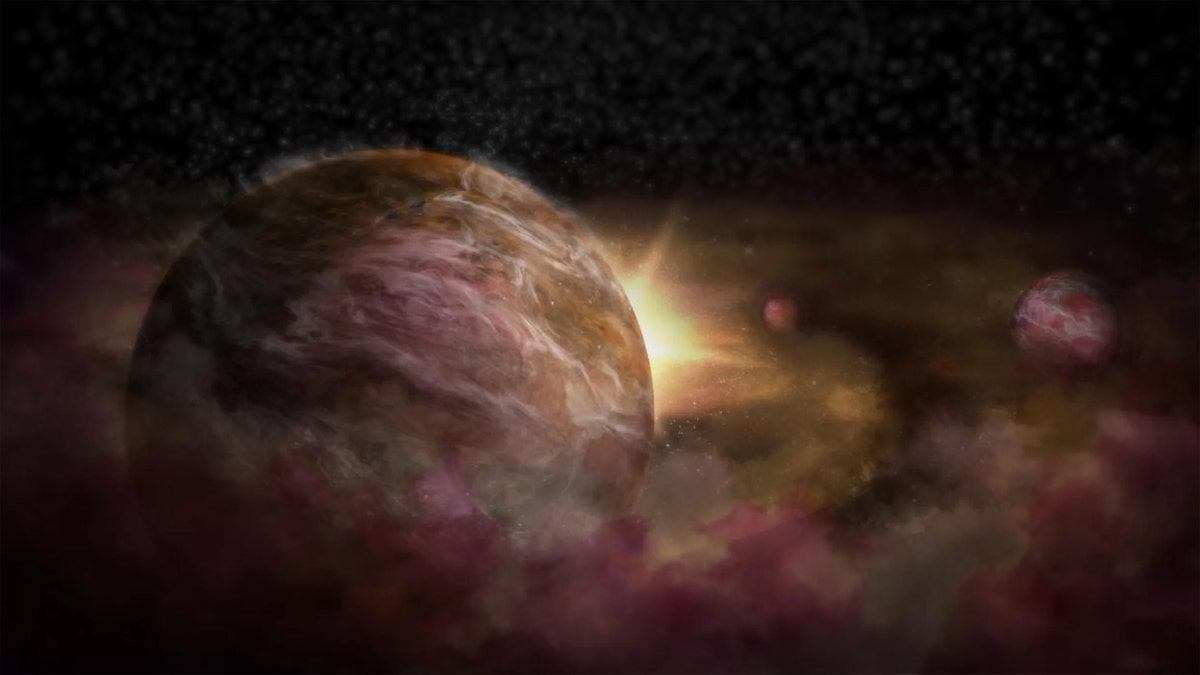
Artist's illustration of protoplanets forming around a young star. Credit: S. Dagnello; NSF/NRAO/AUI
Three exoplanets are in the process of being born around a young star that's not too far from the sun, two new studies report.
That star is the 4-million-year-old HD 163296, which lies roughly 330 light-years from our own solar system, in the direction of the constellation Sagittarius.
Previous observations of HD 163296 by the Atacama Large Millimeter/submillimeter Array (ALMA) in Chile revealed a "protoplanetary disk" of dust and gas circling the star. This disk features two dark gaps, which astronomers believe were carved out by newly forming planets. [See: 2 Newborn Planets May Be Forming Around a Distant Young Star]
The two new studies provide strong evidence for the existence of those two presumed alien worlds, as well as a third one. All three are Jupiter-like gas giants, and they orbit at distances of 80 AU, 140 AU and 260 AU, researchers said. (One AU, short for "astronomical unit," is the average Earth-sun distance — about 93 million miles, or 150 kilometers.)
Both research teams looked at ALMA data. But, instead of studying gaps in the disk, they employed a new strategy: analyzing the motion of carbon monoxide (CO) gas. CO and other gases tend to move in a predictable way in protoplanetary disks — unless they run into gravitational obstacles.
"It would take a relatively massive object, like a planet, to create localized disturbances in this otherwise orderly motion," Christophe Pinte of Monash University in Australia, lead author of one of the two new papers, said in a statement. "Our new technique applies this principle to help us understand how planetary systems form."
Pinte's team identified the outermost planet in the HD 163296 system. The other team, led by Richard Teague of the University of Michigan, used similar methods to spot the other two worlds.
Combining the ALMA CO observations with computer-modeling work allowed the researchers to estimate the masses of the young exoplanets. All three of them appear to be gas giants, with masses not too different from that of Jupiter, the researchers said.
Astronomers have discovered more than 3,700 confirmed exoplanets to date. The vast majority have been detected using one of two strategies — the "transit method," which notes the tiny brightness dips caused when a world crosses its host star's face; or the "radial-velocity method," which picks up the slight movements in a star induced by the gravitational tug of an orbiting planet.
However, neither one of these techniques is well-suited to finding newborn worlds in protoplanetary disks. So the two new studies could open some doors, researchers said.
"This entirely new approach could uncover some of the youngest planets in our galaxy, all thanks to the high-resolution images coming from ALMA," Teague said in the same statement.
The two studies were published online today (June 13) in the Astrophysical Journal Letters.
Originally published on Space.com.
